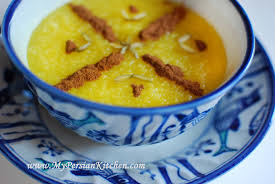The University of Missouri brings in a host of international graduate students to study in their specific branches of chemistry, engineering, economics and political affairs—not to mention the School of Journalism for which it is so famous. In working with the international teaching assistants on campus, I’ve met many lovely individuals eager for friendship and cultural exchange. When I met Maryam from Iran—she prefers to call it Persia—the experience was one of mutual admiration and trust. Her use of English was easy and comfortable, like talking to my own sister.
Initial conversations centered on how to understand a variety of viewpoints and personalities in the workplace and how to manage those situations in a culturally responsive way. Maryam was eager to try anything to smooth out the rocky road of cross-cultural relationships. Sometimes, “something has to give,” as Americans like to say. Thankfully, there are people like Maryam willing to go the extra mile. In one case, it only meant bring cake to work on someone’s birthday. Small gestures of hospitality like this can soften folks up.
Maryam is particularly good with hospitality and I was eager for my first encounter with a Persian meal made in her home. I had already taken in the lovely table setting of the Persian New Year with the seven items that start with the sound of /s/ and special greetings given at the society of Persian students at MU. However, this would be a sit down meal for my husband and me, as well as for Maryam’s neighbor Sandy (Alexandra), a Greek immigrant of over 25 years who had navigated the acculturation process successfully.
Both the conversation and cuisine were memorable. Regarding the meal, we started in the living room with a spread of fresh strawberries, nuts and other fruits set before us. Tea in lovely glass cups arrived. Maryam usually serves a Ahmed Ceylon tea, perfect its color of orangey-brown with no need for any sugar, steeped with a stick of cinnamon.
Baklava laced with cardamom and pistachio came next, authentic from the Persian market , which I gathered was brought in my her parents who vacation in the U.S. a couple times each year. In these surroundings, Maryam let her guest get acquainted and we learned one another’s histories and exploits with cross-cultural living and making mistakes. We learned a little Greek history from Sandy and tried to picture the contexts she was describing and the other nations in which she had lived.
Invited into the dining area, the table was set and ready for us to enjoy a stew of lamb and barley (soup e’ Jo, thick and rich and what Americans call, “hearty” –all to say the dish has a sense of fresh herbs and spices, fresh vegetables lovingly prepared.
A plate of fresh vegetables that you might see in a fresh salsa was given to us with a homemade yoghurt dip (mashst). For the salsa called salad e’ shirazi, Maryam finely chopped small Persian cucumber, tomato, onion, lemon juice and a tiny bit of mind leaves. For the yoghurt dip, she prepared homemade yogurt as her practice from whole organic milk and had added fresh mint from her garden, chopped walnuts, and Persian raisins. I lost count of how many spoonfuls of mahst, that I poured over the vegetables. It seemed I couldn’t’ get enough of this delightful, somewhat thin sauce.
Persian rice called adas polo was at the center of the meal. This was a dish of carefully prepared saffron rice with Persian saffron, brown lentils, and ground beef browned into little chunks, Persian raisins called keshmesh which are much smaller, yet plumper than an American raisin. We were welcomed to piles of adas polo.
When I learned the name of keshmesh, I chuckled to myself. The name reminded me of the creatively that the Mongolian people have with their language. You can put two words together to make a new meaning. It is conjugated like this. You take a word you want to talk about such as meat, “makh” and then you rhyme with it but change the first letter to an “m” or a ‘z”. In this case, “makh” already has an initial sound of /m/ so we add the /z/ and get “makh zakh.” Come to find out, they can do the same playful expression in Persian and thus, we have “kesh-mesh.” Mongolian language has its roots in many nations of Central Asia and shares the Subject-Object-Verb sentence construction with the ancient Persians.
The meal completed with a rice dessert, worthy of a long description. Shole’ zard is a gelatinous dessert of basmati rice, colored yellow with Persian saffron, and decorated on top with a pattern of slivered nuts made into flowers along a path of cinnamon. This was eaten with a spoon as in pudding.
Ingredients for Shole’ Zard
- 1 cup white basmati rice.
- 10 cups water, divided.
- 1 cup white sugar (I use a bit less and add to taste, the fun part! …
- 1⁄4cup canola oil.
- 1⁄3cup rose water.
- 2 teaspoons powdered saffron (or more to taste)
- 2 tablespoons blanched slivered almonds.



